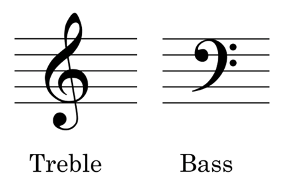See also :
This post belongs to the beginning of a series in the “Learning” section of this Substack. If you just wish to receive the general posts and not these ones, you can unsubscribe from this section in your settings.
Here are some introductory remarks and exercises.
A piano or keyboard or other instrument is helpful for orientation with singing and for learning how to pitch intervals, although it’s not by any means essential. For those who are not familiar yet with where the notes are, I’ll be using the image of a piano keyboard now and again, annnotated with note names.
Be aware that the piano is generally tuned in equal temperament, whereas you will be able to sing sweeter-sounding intervals unaccompanied, including harmonies with others, due to less “beating.”
In the above image of a piano keyboard:
You can see that there are seven notes named from A to G, repeated in every octave.
If you have your own piano or other keyboard, find and play middle C, roughly in the middle of the keyboard (or on the piano, near the keyhole). It is the white note just to the left of the two black notes.
Then find and play all the other C’s - they follow that same pattern. (You will notice that the black notes are arranged together in groups of either twos or threes.) Knowing where the C's are, you can find and name all the other notes.
From middle C (or the C below if that is your vocal range), play the white notes up to the next C and back again, while singing the names of the notes.
Here are recordings of this, which is the scale of C major.
Sopranos/Altos:
Tenors/Basses:
Terms that have been used - to become familiar with:
Beating (acoustics) - waves that occur when two or more notes or their overtones are not exactly in unison. Beating is generally perceived as periodically fluctuating sound intensity. (Not to be confused with rhythmic beat)
Clef - The clef determines the particular range of pitches of a stave. The most commonly used clefs for singers are treble clef (sopranos and altos) and bass clef. For the tenor range, the treble clef is often used, but with an 8 written beneath it, to indicate an octave below.
Equal temperament - the conventional modern tuning system for the piano and fretted instruments, where all the twelve semitones contained in the octave are exactly the same frequency ratio. It is a compromise over just intonation (which has the purest intervals) in order to be able to play in any key without “wolf tones,” or particularly dissonant intervals.
Key - the scale (or pattern of pitches) that forms the basis of a particular piece.
Octave - an interval of eight notes, for example, C to the next C. If you sing or play these two C's together, the sound is very pure.
Pitch - how high or low a note sounds. It corresponds to “frequency” in physics, that is, the number of sound vibrations per second (Hertz or Hz). Concert pitch is the usual convention of having the A above middle C at the frequency of 440Hz.
Semitone - the interval between two adjacent notes on the keyboard, with no black or white note in between.
Stave (or Staff) - The set of horizontal lines upon which musical notes are written. There are five lines in modern Western musical notation, but, for example in plainsong notation, a four line stave was (and sometimes still is) used. Each line or space on the stave represents a certain musical pitch, dependent on the clef used.
Tone - A musical note.
Whole tone - the interval between two white notes on the keyboard when there is a black note in between. Or: the interval between two black notes with one white note in between. Also called a major second. It is made up of two semitones. For example, C to D; or F# to G#.
Unison - two or more singers or instruments sounding a note at the same pitch.
These terms have also been added to the Glossary.
Further Exercises
Learn the terms above. Get someone to test you.
Sing the major scale, one octave up and down, at least twice a day, singing the names C to C, and back, out loud. You can also sing the notes to Do Re Mi Fa Sol La Si Do. (That is, Do = C.) Notice the sounds reverberating in the body. And listen to what a difference smiling makes to the sound.
Task for next week: Purchase or get out your music manuscript book. Or print out a page of manuscript music: for example, at this link. (Or for larger staves, this link.) Have a pencil and rubber ready.
Please ask any questions!
From piano image of Chickering & Sons piano, Museum of Making Music. Credit: doryfour.




